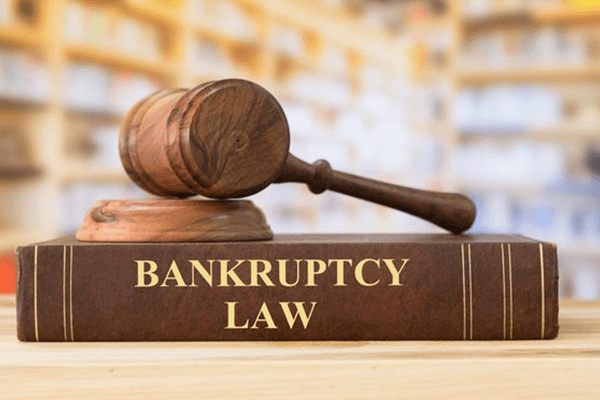

Bankruptcy and insolvency laws play a critical role in facilitating the resolution of financial distress and ensuring the fair treatment of stakeholders. To enhance the effectiveness of bankruptcy and insolvency regimes, it is essential to conduct a comparative analysis of laws and practices across different jurisdictions. This article aims to provide a detailed examination of bankruptcy and insolvency laws in India, the United States, the United Kingdom, and Singapore. By exploring their similarities, differences, and learning from their experiences, we can identify potential reforms and improvements for India’s bankruptcy and insolvency framework.
Legal Framework and Scope:
- India: The Insolvency and Bankruptcy Code (IBC) of 2016 provides a comprehensive legal framework for insolvency resolution, covering both corporate and personal insolvency. The IBC established the National Company Law Tribunal (NCLT) and the Insolvency and Bankruptcy Board of India (IBBI) as specialized forums for resolving insolvency cases.
- United States: The United States Bankruptcy Code governs bankruptcy proceedings and is primarily divided into chapters for different types of bankruptcies, such as Chapter 7 (liquidation) and Chapter 11 (reorganization) for businesses.
- United Kingdom: The UK’s insolvency regime is governed by the Insolvency Act 1986 and offers various procedures, including administration, liquidation, and company voluntary arrangements (CVAs), tailored to different situations.
- Singapore: Singapore’s insolvency framework is primarily governed by the Companies Act and the Bankruptcy Act. It combines elements of creditor-led and debtor-led processes, offering mechanisms such as judicial management and schemes of arrangement.
Insolvency Resolution Process
- India: The IBC introduced a time-bound insolvency resolution process, aiming for the maximization of value for all stakeholders. It includes mechanisms such as corporate insolvency resolution, liquidation, and voluntary insolvency resolution for individuals.
- United States: Chapter 11 bankruptcy allows businesses to reorganize and develop a repayment plan, while Chapter 7 involves the liquidation of assets. The U.S. process involves extensive negotiations with creditors and court approvals.
- United Kingdom: The UK’s insolvency regime emphasizes the rescue and rehabilitation of businesses through mechanisms like administration and CVAs, focusing on maintaining the continuity of the enterprise.
- Singapore: Singapore’s insolvency process aims to facilitate the rescue of viable businesses through judicial management or schemes of arrangement, providing a more debtor-friendly approach.
Stakeholder Rights and Protections
- India: The IBC recognizes the rights of all stakeholders, including secured and unsecured creditors, shareholders, and employees. It provides for the formation of a committee of creditors and the appointment of resolution professionals to safeguard their interests.
- United States: The U.S. Bankruptcy Code offers various protections for debtors, such as the automatic stay, which halts collection activities upon filing for bankruptcy. It also provides mechanisms to protect creditors’ rights and interests.
- United Kingdom: The UK’s insolvency regime includes protections for creditors, shareholders, and employees. Creditors have the right to vote on certain matters, and employees enjoy specific employment-related safeguards.
- Singapore: Singapore’s insolvency framework focuses on balancing the interests of creditors and debtors. It allows for the appointment of judicial managers to protect the rights of stakeholders and facilitate the restructuring process.
Lessons and Potential Reforms
- Timely Resolution: India can learn from the time-bound resolution processes in the United States and Singapore to enhance the efficiency of its insolvency proceedings and reduce delays. Introducing strict timelines and penalties for non-compliance can help expedite the resolution process.
- Rehabilitation Focus: The UK’s emphasis on business rescue mechanisms, such as administration and CVAs, can inspire India to strengthen its restructuring provisions and promote the revival of financially distressed companies.
- Stakeholder Involvement: India can explore mechanisms for increased stakeholder participation, as seen in the U.S. Bankruptcy Code, where creditors have a significant role in decision-making.
- Personal Insolvency: Learning from the bankruptcy regimes of the United States and the United Kingdom, India can further develop its framework for personal insolvency to provide relief and rehabilitation options for individuals facing financial distress.
Conclusion: A comprehensive comparative analysis of bankruptcy and insolvency laws across different jurisdictions highlights the strengths, weaknesses, and potential reforms that can enhance the effectiveness of India’s insolvency framework. By considering the experiences of countries like the United States, the United Kingdom, and Singapore, India can adapt and implement best practices to streamline its insolvency resolution processes, protect stakeholder rights, and promote economic recovery. Continuous evaluation and learning from global perspectives are key to building a robust and responsive insolvency regime in India.

